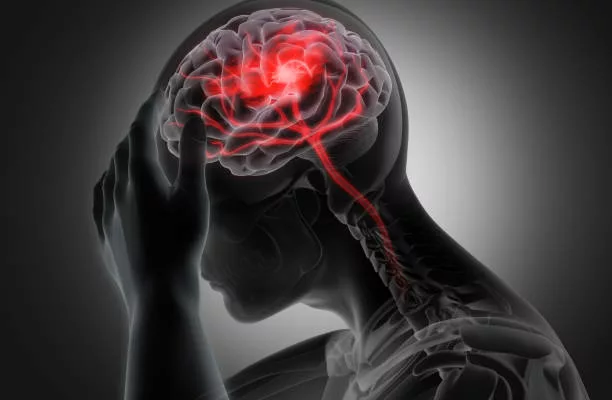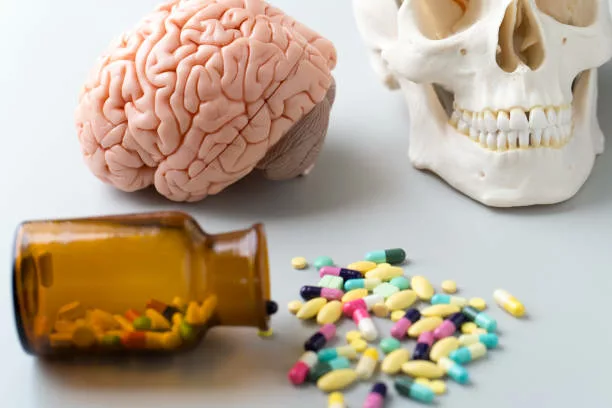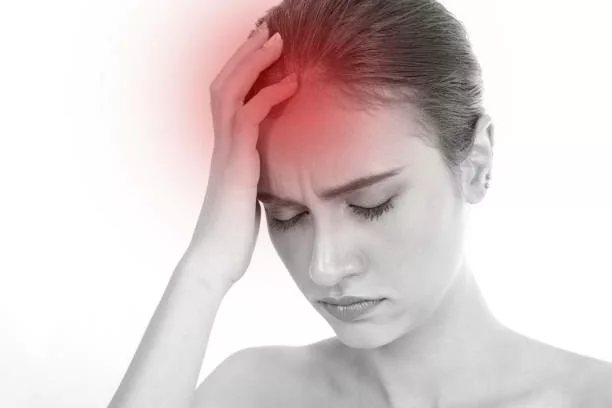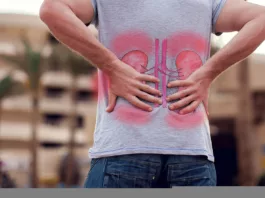Cluster headaches (CH) and migraines are classified as primary headaches according to the International Classification of Headache Disorders.1International Headache Society. (2018). Headache Classification Committee of the International Headache Society (IHS) The International Classification of Headache Disorders, 3rd edition. Cephalalgia, 38(1), 1–211. https://doi.org/10.1177/0333102417738202 Migraine and CH affect 15% and 0.1% of the general population, respectively.2Stovner, L. J., Hagen, K., Linde, M., & Steiner, T. J. (2022). The global prevalence of headache: an update, with analysis of the influences of methodological factors on prevalence estimates. The Journal of Headache and Pain, 23(1). https://doi.org/10.1186/s10194-022-01402-2 These headache types share similarities in trigger factors and treatment responses; for instance, both can be triggered by alcohol and may respond to medications such as triptans and lidocaine.
However, migraines and cluster headaches differ significantly in gender prevalence and headache characteristics. Migraines are more common in women and are often associated with hormonal fluctuations, whereas cluster headaches are more prevalent in men. Additionally, the frequency and duration of attacks differ between the two types.
Cluster headaches vs. Migraine
Cluster Headaches:
These are considered one of the most severe types of headaches, characterized by excruciating pain localized in or near one eye on a single side of the head. These headaches occur in cyclical patterns known as cluster periods, during which individuals experience frequent attacks over weeks to months. Following these intense clusters, individuals often enter recovery periods, during which the frequency and intensity of headaches diminish. The duration of headache-free intervals during treatment can extend for weeks and, in some cases, even months.

Compared to Migraines, cluster headaches are significantly less common. Only one in 1,000 people have them. Meanwhile, one in seven people experience migraines, a relatively common condition.
Although Migraines can strike anyone at any age, many people have their first attack around adolescence. On the other hand, cluster headaches typically begin in people’s 30s and 40s. Cluster headaches are more common in men than women, while migraines are more common in women.3Al-Karagholi, M. A.-M., Peng, K.-P., Petersen, A. S., De Boer, I., Terwindt, G. M., & Ashina, M. (2022). Debate: Are cluster headaches and migraine distinct headache disorders? The Journal of Headache and Pain, 23(1). https://doi.org/10.1186/s10194-022-01504-x
Migraine
Migraine manifests in four distinct phases, all of which can occur during an attack:
- Premonitory Phase: This phase can occur up to 24 hours before the onset of a migraine. During this phase, individuals may experience various symptoms such as food cravings, unexplained mood changes (including depression or euphoria), excessive yawning, fluid retention, or increased urination.
- Aura Phase: Some individuals may experience an aura before or during a migraine attack. Auras can manifest as visual disturbances like flashing lights or heat waves. Alternatively, auras may involve other sensory experiences like tingling or numbness in the face or extremities, difficulty speaking, or auditory hallucinations. Unlike migraines, cluster headaches generally do not involve auras.4Silberstein, S. D., Niknam, R., Rozen, T. D., & Young, W. B. (2000). Cluster headache with aura. Neurology, 54(1), 219-219.
- Headache Phase: The headache phase is characterized by the gradual onset and intensification of migraine symptoms. While headaches are commonly associated with migraines, it is possible to have a migraine without a headache. Migraine headaches typically build in intensity and can be accompanied by various symptoms such as throbbing pain, sensitivity to light and sound, nausea, and impaired concentration.
- Postdrome Phase: Following a migraine attack, individuals often experience a postdrome phase. During this period, individuals may feel exhausted, confused, or emotionally drained. The postdrome phase can last up to a day, and it is common for individuals to require time to recover before feeling completely healthy again.
It’s important to note that not everyone with migraines will experience all four phases, and the duration and intensity of each phase can vary between individuals. Understanding the different phases of a migraine can help individuals recognize and manage their symptoms.
Symptoms
Although both migraine and cluster headaches can result in severe headaches, a migraine headache frequently affects one side of the brain. It is characterized by throbbing or pulsating pain. A cluster headache can start suddenly, and the pain is frequently described as piercing, scorching, or intense. Although it also affects one side of the head, the discomfort is usually concentrated around or behind one eye.5Agneta Snoer, Lund, N., Beske, R. P., Jensen, R., & Mads Barloese. (2018). Pre-attack signs and symptoms in cluster headache: Characteristics and time profile. 38(6), 1128–1137. https://doi.org/10.1177/0333102417726498
Cluster Headache Symptoms:
Some of the common cluster headache symptoms include:
- Usually unilateral, deep stabbing pain around the eye or temple
- Pain in the side of the head
- Runny or stuffed nose
- Droopy eyelids
- Redness or tears in the eyes
- Sweating
- Red and warm face
Migraine Symptoms:
Common symptoms of migraines include:
- Nausea and vomiting
- Fatigue
- Dizziness
- Sensitivity to light (photophobia)
- Sensitivity to sounds (phonophobia) and smells (osmophobia)
- Visual disturbances (aura)
- Difficulty with hearing or speech6Laurell, K., Artto, V., Bendtsen, L., Hagen, K., Häggström, J., Linde, M., Söderström, L., Tronvik, E., Wessman, M., Zwart, J. A., & Kallela, M. (2016). Premonitory symptoms in Migraine: A cross-sectional study in 2714 persons. Cephalalgia, 36(10), 951–959. https://doi.org/10.1177/0333102415620251
What are the causes of Cluster Headaches & Migraines?
Doctors still do not know the exact causes of cluster headaches and migraines. However, research has identified several potential factors that contribute to their causes. For cluster headaches, the trigeminal autonomic reflex and abnormalities in the hypothalamus play a significant role. Migraines involve a complex interplay of genetic, neurological, and environmental factors.
Risk Factors
For Cluster Headaches:
Risk factors associated with cluster headaches include:
- Gender: Cluster headaches are more common in males, with a male-to-female ratio of approximately 2.5:1.7Wei DY, Yuan Ong JJ, Goadsby PJ. Cluster Headache: Epidemiology, Pathophysiology, Clinical Features, and Diagnosis. Ann Indian Acad Neurol. 2018 Apr;21(Suppl 1): S3-S8. Doi: 10.4103/aian.AIAN_349_17. PMID: 29720812; PMCID: PMC5909131.
- Age Cluster headaches typically start in adulthood, with most cases developing between 20 and 50.
- Family History: A family history of cluster headaches increases the likelihood of experiencing them.
- Smoking: Cigarette smoking has been strongly associated with an increased risk of cluster headaches.
- Alcohol Consumption: Alcohol, particularly certain types such as red wine, has been known to trigger cluster headache attacks in susceptible individuals.
- Seasonal Variations: Cluster headaches often occur in specific seasons, with higher frequency reported during the spring and autumn months.
- Sleep Patterns: Disruptions or irregular sleep patterns, such as irregular sleep-wake schedules or excessive daytime sleepiness, can increase the risk of cluster headaches.
- Triggers: Certain triggers, such as strong odors, bright lights, high altitude, heat, and certain foods, have been reported to provoke cluster headache episodes in some individuals.
It’s important to note that while these factors are associated with an increased risk, not everyone with these risk factors will develop cluster headaches, and individuals without these risk factors can still experience cluster headaches.
For Migraine:
- Age: Migraines can affect individuals of all ages, but they commonly start during adolescence or early adulthood.
- Genetics: There is evidence that migraines tend to run in families, suggesting a genetic predisposition to the condition.
- Gender: Migraines are more prevalent in females, with women being three times more likely to experience them than men.
- Hormone changes: Fluctuations in hormone levels, particularly estrogen, have been associated with migraines in women. Migraines may be triggered by hormonal changes during menstrual cycles, pregnancy, or menopause.
- Stress: Emotional stress, as well as physical stress on the body, can act as triggers for migraines.
- Other medical conditions: Certain medical conditions such as bipolar disorder, epilepsy, anxiety disorders, and sleep disorders have been linked to an increased risk of migraines.
- Environmental factors: External stimuli like loud noises, bright lights, strong odors, or changes in weather patterns can provoke migraines in susceptible individuals.8Stovner, L. J., Hagen, K., Linde, M., & Steiner, T. J. (2022). The global prevalence of headache: an update, with analysis of the influences of methodological factors on prevalence estimates. The Journal of Headache and Pain, 23(1). https://doi.org/10.1186/s10194-022-01402-2
Medications
If you suffer headaches regularly, you may need treatment to reduce how severe or how often they occur in the future. That is known as “prophylactic” or preventive therapy.
For Cluster Headache:
For individuals with cluster headaches, several medications and therapies can be utilized:
- Oxygen therapy: Inhalation of pure oxygen is an effective acute treatment for cluster headaches and can help alleviate symptoms during an episode.
- Triptans: Medications such as Sumatriptan and Zolmitriptan are commonly used to provide relief during cluster headache attacks.
- Lidocaine nasal spray: Nasal spray containing lidocaine can be used to alleviate the pain associated with cluster headaches.
- Octreotide: This medication, typically administered by injection, may be prescribed for individuals experiencing cluster headaches who do not respond to other treatments.
In addition to acute medications, preventive medicines9Drescher, J., Khouri, A., Tina Katharina Amann, Gaul, C., Kropp, P., Siebenhaar, Y., & Scheidt, J. (2021). Effectiveness of medication in cluster headache. BMC Neurology, 21(1). https://doi.org/10.1186/s12883-021-02195-8 can be prescribed for cluster headaches. These may include:
- Corticosteroids like prednisone
- Lithium carbonate
- Verapamil (Calan, Verelan)
- Topiramate (Qudexy XR, Topamax, Trokendi XR)
- Nerve blocks
It’s important to note that the choice of preventive treatment will depend on individual circumstances, the frequency and severity of cluster headaches, and the patient’s response to different medications. Consulting with a healthcare professional is crucial in determining the most suitable treatment approach for managing cluster headaches effectively.

For Migraine:
Your doctor will carefully assess your symptoms’ severity, overall health, and medical history to determine the most suitable medication for your migraines. The following options10Lew C, Punnapuzha S. Migraine Medications. [Updated 2023 May 1]. In: StatPearls [Internet]. Treasure Island (FL): StatPearls Publishing; 2023 Jan-. Available from: https://www.ncbi.nlm.nih.gov/books/NBK553159/ may be considered for treatment:
- Over-the-counter pain relievers such as aspirin, ibuprofen, or medications that contain caffeine can help alleviate mild to moderate migraine pain.
- If you experience nausea along with migraines, your doctor may prescribe medications specifically designed to relieve nausea and vomiting associated with migraines.
- Triptans: Triptans are a class of medications available in various forms, including oral pills, nasal sprays, dissolvable tablets, or injections. They work by narrowing blood vessels and reducing inflammation in the brain, relieving migraine symptoms.
- Ergotamine: Ergotamine medications, such as Ergomar, Cafergot, or Migergot, may be prescribed for migraines that are not adequately controlled with other treatments. They constrict blood vessels and help alleviate migraine symptoms.
- CGRP Receptor Antagonists: CGRP (calcitonin gene-related peptide) receptor antagonists are a newer class of medications specifically developed for treating migraines. Examples include ubrogepant (Ubrelvy) and rimegepant (Nurtec), which block CGRP receptors and reduce migraine pain and associated symptoms.
It’s important to note that the choice of medication will depend on individual factors and may vary from person to person. Consulting with your doctor will help determine the most effective treatment plan for managing your migraines.
How to Stop the Cluster Headache Cycle
While cluster headaches are currently incurable, there are strategies to manage and potentially reduce the frequency and severity of attacks. Here are some tips:
- Keep a regular sleep schedule.
- Skip the alcohol, wine, smoking, coffee, or anything that triggers the cluster or migraine headache.
- Practice rhythmic and visualized breathing.
- Certain treatments, like Capsaicin nasal spray and Melatonin supplements, may help reduce the frequency of headaches.
Although you cannot stop a cluster headache cycle from starting, you can begin taking preventive medications as soon as a cycle begins. These medications are taken daily during the cluster period to help minimize the number and intensity of headaches you experience.
Are Migraine Auras a Severe Problem?
Migraine auras are not serious. Temporary visual or other disruptions are common migraine aura symptoms, usually before other migraine symptoms, including severe headache pain, nausea, and sensitivity to light and sound.
A migraine aura often starts around an hour before head pain begins and lasts less than an hour. Sometimes, especially in those over 50, migraine aura can happen without a headache.11Janis, J. E., Barker, J. C., Javadi, C., Ducic, I., Hagan, R., & Guyuron, B. (2014). A Review of Current Evidence in the Surgical Treatment of Migraine Headaches. Plastic and Reconstructive Surgery, 134, 131S141S. https://doi.org/10.1097/prs.0000000000000661
Conclusion
Migraines and cluster headaches are two distinct types of severe primary headaches. While their cyclical patterns and pain are similar, their prevalence, gender distribution, and related symptoms vary. To better understand and manage these disorders, more research is required.
Refrences
- 1International Headache Society. (2018). Headache Classification Committee of the International Headache Society (IHS) The International Classification of Headache Disorders, 3rd edition. Cephalalgia, 38(1), 1–211. https://doi.org/10.1177/0333102417738202
- 2Stovner, L. J., Hagen, K., Linde, M., & Steiner, T. J. (2022). The global prevalence of headache: an update, with analysis of the influences of methodological factors on prevalence estimates. The Journal of Headache and Pain, 23(1). https://doi.org/10.1186/s10194-022-01402-2
- 3Al-Karagholi, M. A.-M., Peng, K.-P., Petersen, A. S., De Boer, I., Terwindt, G. M., & Ashina, M. (2022). Debate: Are cluster headaches and migraine distinct headache disorders? The Journal of Headache and Pain, 23(1). https://doi.org/10.1186/s10194-022-01504-x
- 4Silberstein, S. D., Niknam, R., Rozen, T. D., & Young, W. B. (2000). Cluster headache with aura. Neurology, 54(1), 219-219.
- 5Agneta Snoer, Lund, N., Beske, R. P., Jensen, R., & Mads Barloese. (2018). Pre-attack signs and symptoms in cluster headache: Characteristics and time profile. 38(6), 1128–1137. https://doi.org/10.1177/0333102417726498
- 6Laurell, K., Artto, V., Bendtsen, L., Hagen, K., Häggström, J., Linde, M., Söderström, L., Tronvik, E., Wessman, M., Zwart, J. A., & Kallela, M. (2016). Premonitory symptoms in Migraine: A cross-sectional study in 2714 persons. Cephalalgia, 36(10), 951–959. https://doi.org/10.1177/0333102415620251
- 7Wei DY, Yuan Ong JJ, Goadsby PJ. Cluster Headache: Epidemiology, Pathophysiology, Clinical Features, and Diagnosis. Ann Indian Acad Neurol. 2018 Apr;21(Suppl 1): S3-S8. Doi: 10.4103/aian.AIAN_349_17. PMID: 29720812; PMCID: PMC5909131.
- 8Stovner, L. J., Hagen, K., Linde, M., & Steiner, T. J. (2022). The global prevalence of headache: an update, with analysis of the influences of methodological factors on prevalence estimates. The Journal of Headache and Pain, 23(1). https://doi.org/10.1186/s10194-022-01402-2
- 9Drescher, J., Khouri, A., Tina Katharina Amann, Gaul, C., Kropp, P., Siebenhaar, Y., & Scheidt, J. (2021). Effectiveness of medication in cluster headache. BMC Neurology, 21(1). https://doi.org/10.1186/s12883-021-02195-8
- 10Lew C, Punnapuzha S. Migraine Medications. [Updated 2023 May 1]. In: StatPearls [Internet]. Treasure Island (FL): StatPearls Publishing; 2023 Jan-. Available from: https://www.ncbi.nlm.nih.gov/books/NBK553159/
- 11Janis, J. E., Barker, J. C., Javadi, C., Ducic, I., Hagan, R., & Guyuron, B. (2014). A Review of Current Evidence in the Surgical Treatment of Migraine Headaches. Plastic and Reconstructive Surgery, 134, 131S141S. https://doi.org/10.1097/prs.0000000000000661





